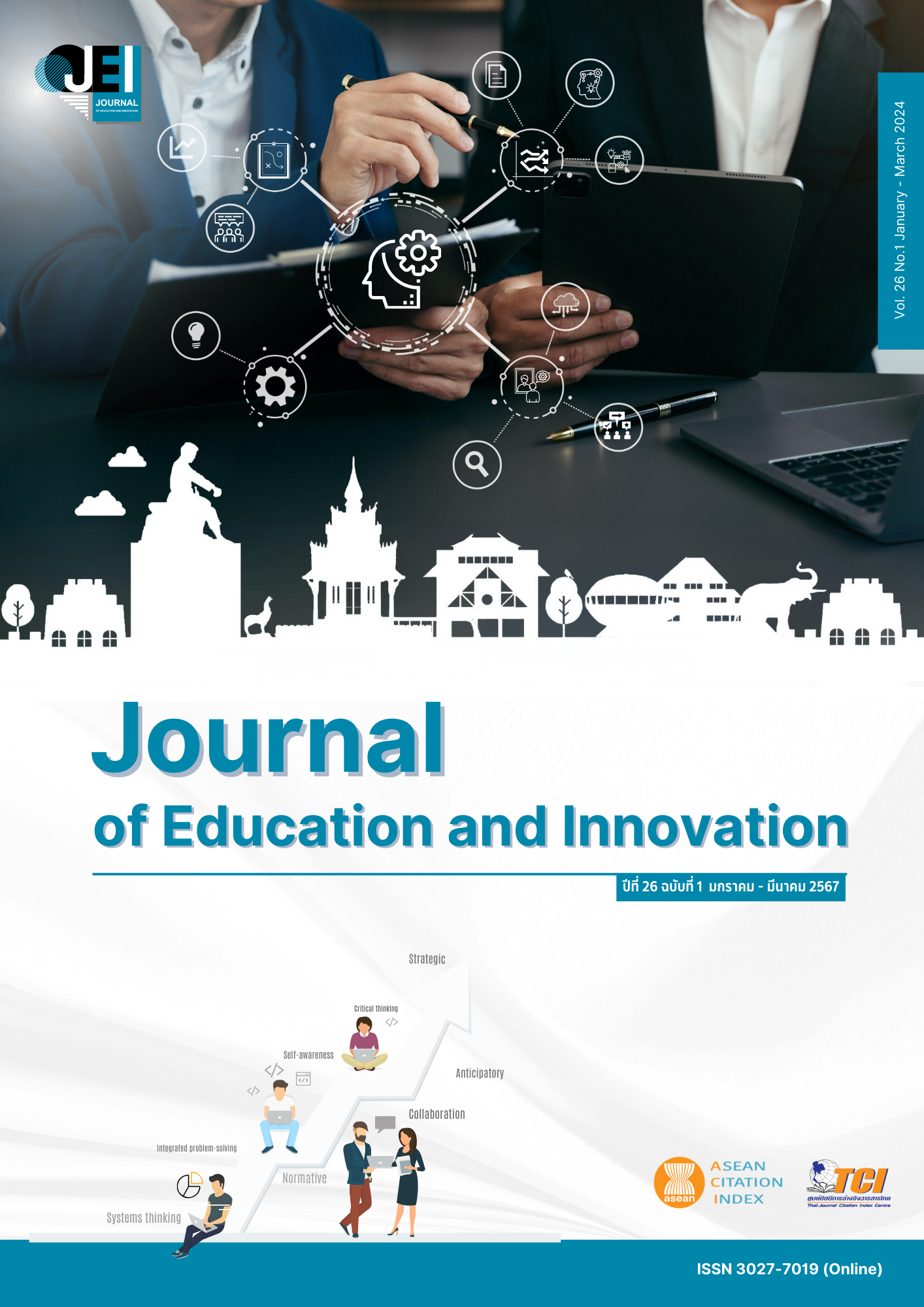THE DEVELOPMENT OF CRITICAL THINKING ABILITY THROUGH ARCS MODEL LEARNING ACTIVITIES ON THE SEQUENCE AND SERIES OF GRADE 12 STUDENTS
Main Article Content
Abstract
This research was aimed to: 1) study the guidelines for ARCS Model learning activities on the sequence and series, and 2) to develop the critical thinking ability through ARCS Model learning activities on the sequence and series of grade 12 students. The research followed action research consisting of planning, action, observation, and reflection. It operates as a continuous operating cycle of 4cycles. The participants consisted of 12 students in grade 12. There were four research tools which are lesson plan based on ARCS Model learning activities on sequence and series, reflection form, activity sheet, and critical thinking ability test. The results showed that: 1) Guidelines for learning activities should focus on: 1.1) asking questions and giving examples of situations; 1.2) linking the definition/theorem of sequences and series to real situations; 1.3) arguing with appropriate reasons; and 1.4) finding a way to find a variety of answers, 2) the development of critical thinking ability of students in grade 12 were: 2.1) during the using of the ARCS Model learning activities on the sequence and series, students’ critical thinking abilities were enhanced in overall, 2.2) after learning through ARCS Model learning activities on the sequence and series, most students’ critical thinking abilities (89.85%) were at a good level.
Article Details

This work is licensed under a Creative Commons Attribution-NonCommercial-NoDerivatives 4.0 International License.
The owner of the article does not copy or violate any of its copyright. If any copyright infringement occurs or prosecution, in any case, the Editorial Board is not involved in all the rights to the owner of the article to be performed.
References
Emerson, M. K. (2013). A model for teaching critical thinking. Retrieved from https://files.eric.ed.gov/fulltext/ED540588.pdf
Keller, J. M. (1987). Development and Use of the ARCS Model of Instructional Design. Journal of Instructional development. 10(3), 2 – 10.
Kemmis, S., & McTaggart, R. (1988). The action research planner (3rd ed.). Geelong, Australia: Deakin University Press.
Kurt, P. Y., & Kecik, I. (2017). The effects of ARCS motivational model on student motivation to learn English. European Journal of Foreign Language Teaching. 2(1), 22 – 44.
Moonkam, S. (2004). Critical teaching strategies. Bangkok: Phabpim.
Plangsorn, B. (2014). Development of design procedure of electronic book for U-learning using ARCS model. Journal of Technical Education Development King Monkut's University of Technology North Bangkok, 26(91), 26 – 33.
Sariwat, L. (2006). Thinking. Bangkok: O.S. Printing House.
Siksoy, G. A., & Ozdamli, F. (2016). Flipped classroom adapted to the ARCS model of motivation and applied to a Phisics. Eurasia Journal of Mathematics, Science & Technology Education, 12(6), 1589-1603.
Suherman, S., Zaman, A. M., & Farida, F. (2021). Fostering of mathematical critical thinking ability using ARCS model and students’ motivation. Jurnal Teori dan Aplikasi Matematika, 5(1), 134 – 143.
The Institute for the Promotion of Teaching Science and Technology. (2012). Measurement and evaluation of mathematics. Bangkok: Se-Education Public Company.


